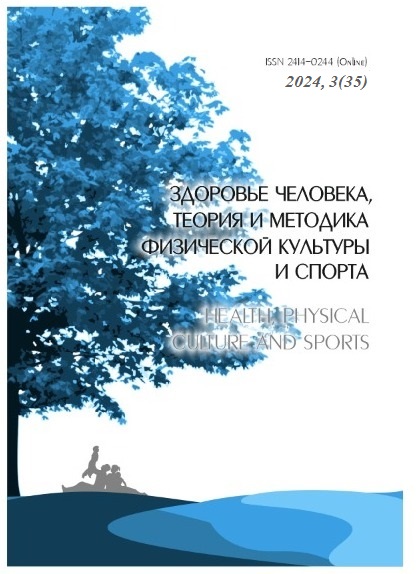ОТ ФИТОМОРФИЗМА К МЕТАФОРИЧЕСКОЙ ТЕРМИНОЛОГИЗАЦИИ В МЕДИЦИНЕ
Аннотация
Цели работы: сформулировать исследование в теоретическом отношении - Теория Концептуального Бленда Фоконье и Тернера; идентифицировать и выделить английские фитоморфные метафоры из медицинского дискурса; изучить концептуальное измерение и описать концептуальные компоненты каждой фитоморфной медицинской метафоры; проследить концептуальный переход на основе корреляций компонентов исходного домена и целевого домена при мепинге и динамику значений в генерическом пространстве до создания новой метафорически нагруженной структуры в бленде; проиллюстрировать общую динамику процессов, ведущих к бленде; повысить терминологическую метафорическую осознание и лингвистическую медицинскую компетентность студентов-медиков и специалистов. Материалы и методы исследования. Материалом для исследования послужили восемьдесят четыре (84) однословных и сложных английских фитоморфных метафорических термина из домена медицины. Применены методы семантического словарного анализа, анализа дефиниций, концептуальной интеграции (когнитивного анализа), компонентного анализа, статистический метод. Обсуждение и результаты исследования. Изложена сущность ментального пространства, основные идеи, заложенные в Теории Концептуального Бленда Фоконье и Тернера - интеграционные процессы с обменом информацией, терминологизацией и возникновением результирующей структуры с новым смыслом. Отмечена значимость фитоморфных метафор для лучшего понимания анатомических объектов, симптомов и синдромов, заболеваний. Прослежены этапы формирования трех примерных фитоморфных метафор (Волосяная луковица, Болезнь „кленового сиропа“/лейциноз, Клубничный язык): ассоциативные корреляции, мепинг и совместное обмен общего объема информации, бленд, концептуализация и формирование новой терминоединицы. Выводы. Сделаны следующие выводы: 1. Мепинг лексики объектов реального мира и медицинских терминов во входных ментальных пространствах (пространство источник-вход 1, пространство цель-вход 2). 2. Объединение общего концептуального измерения двух входных пространств в генерическое ментальное пространство с мотивационными признаками: форма, положение, функция, поверхность, консистенция, запах, цвет. 3. Терминологизация составной лексики в процессе концептуального бленда и образование новой метафорической единицы различного концептуального измерения. 4. Анатомические объекты, симптомы, синдромы и заболевания оказались наиболее частыми номинациями фитоморфных метафор. 5. Уровни обработки информации для всего корпуса английских фитоморфных метафор, ексцерпированных из медицинского дискурса и исследованных (84), следуют алгоритму четырехфреймовой модели Фоконье и Тернера.
Скачивания
Литература
Маккормак Ъ. Когнитивная теория метафоры. В: Арутюнова Н. Д. (сост.) Теория метафоры. Москва: Прогресс, 1990, С. 380 – 381.
Чудинов, А. & Будаев, Е. Становление и эволюция когнитивного подхода к метафоре. Новый филологический вестник, 1 (4), 2007.
Fauconnier, G. Mental spaces. Cambridge: Cambridge University Press, 1994.
Fauconnier, G. Mappings in Thought and Language. Cambridge: Cambridge University Press, 2006.
Fauconnier, G. & Turner, M. Conceptual blending, form and meaning. In: Sémiotique cognitive - Cognitive semiotics, vol. 19, 01. 03. 2003. https://ojs.uclouvain.be/index.php/rec/article/view/48413
McGavock H., Johnston D. & Lockett T. Treating. Common Diseases. An Introduction to the Study of Medicine 1st edition, London: Radcliffe Publishing Ltd, United Kingdom, 2007.
Lakoff, G. 1993: The contemporary Theory of Metaphor in ORTONY, A. (ed.) 1993, Metaphor and Thought, second edition, Cambridge, Cambridge University Press. pp. 202 – 251.
Lakoff, G. & Johnson M. Metaphors we live by. Chicago: Chicago University Press, 1980.
Langacker, R. W. Foundations of cognitive Grammar. Stanford: Polity Press, 1987, p. 147.
MacCormac, E. R. A Cognitive Theory of Metaphor. Cambridge (Mass.) - London: MIT Press, 1985.
Merriam - Webster’s medical dictionary. Masachusetts: Merriam - Webster, Incorporated Springfield, 2016.
Standring, S. Gray's Anatomy: The Anatomical Basis of Clinical Practice 42nd edition. London, King’s College London: Elsevier, 2020.
References:
Arutyunova, N. D. (1990). Metafora i diskurs. Teoriya metafory. Moskva: Progress, S. 5 – 32. (in Russan).
Makkormak ". (1990). Kognitivnaya teoriya metafory. V: Arutyunova N. D. (sost.) Teoriya metafory. Moskva: Progress, S. 380 – 381. (in Russan).
Chudinov, A. & Budayev, Ye. (2007). Stanovleniye i evolyutsiya kognitivnogo podkhoda k metafore. Novyy filologicheskiy vestnik, 1 (4). (in Russan).
Fauconnier, G. Mental spaces. Cambridge: Cambridge University Press, 1994.
Fauconnier, G. Mappings in Thought and Language. Cambridge: Cambridge University Press, 2006.
Fauconnier, G. & Turner, M. Conceptual blending, form and meaning. In: Sémiotique cognitive - Cognitive semiotics, vol. 19, 01. 03. 2003. https://ojs.uclouvain.be/index.php/rec/article/view/48413
McGavock H., Johnston D. & Lockett T. Treating. Common Diseases. An Introduction to the Study of Medicine 1st edition, London: Radcliffe Publishing Ltd, United Kingdom, 2007.
Lakoff, G. 1993: The contemporary Theory of Metaphor in ORTONY, A. (ed.) 1993, Metaphor and Thought, second edition, Cambridge, Cambridge University Press. pp. 202 – 251.
Lakoff, G. & Johnson M. Metaphors we live by. Chicago: Chicago University Press, 1980.
Langacker, R. W. Foundations of cognitive Grammar. Stanford: Polity Press, 1987, p. 147.
MacCormac, E. R. A Cognitive Theory of Metaphor. Cambridge (Mass.) - London: MIT Press, 1985.
Merriam - Webster’s medical dictionary. Masachusetts: Merriam - Webster, Incorporated Springfield, 2016.
Standring, S. Gray's Anatomy: The Anatomical Basis of Clinical Practice 42nd edition. London, King’s College London: Elsevier, 2020.
Авторы, публикующиеся в этом журнале согласны со следующими условиями: авторы сохраняют свои авторские права и предоставляют журналу право первой публикации в связи с работой, которая одновременно распространяется по лицензии Creative Commons Attribution и позволяют другим иметь доступ к работе с признанием авторства этой работы и первоначальной публикацией в этом журнале. Авторы могут заключать отдельные, дополнительные договорные соглашения по неисключительному распространению опубликованной версии, с признанием ее первоначальной публикации в этом журнале.
Авторам разрешается и рекомендуется размещать их работу в Интернете (например, в институциональных хранилищах или на их сайте) до и во время процесса подачи, так как это может привести к продуктивным обменам, а также увеличению цитирования опубликованных работ (см. Политика открытого доступа)
Политика открытого доступа.
Заявление о конфиденциальности
Имена и адреса электронной почты, поданные при публикации в этом журнале, сайт будет использоваться исключительно для заявленных целей данного журнала, и они не будут доступны для любых других целей или какой-либо другой стороне.
Наша публикационная этика журнала основана, в значительной степени, на руководящих принципах и стандартах, разработанных Комитетом по этике публикации (COPE). Соответствующие обязанности и права авторов, рецензентов и редакторов журнала изложены ниже.





